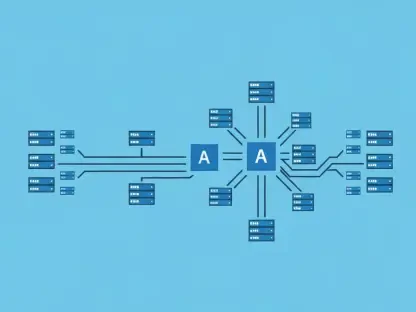Imagine a critical deployment delayed yet again because a test that passed yesterday inexplicably fails today, throwing an entire CI/CD pipeline into chaos. Flaky tests, those intermittent failures that defy consistent reproduction, stand as one of the most frustrating obstacles in modern software development. They disrupt automation workflows, sow doubt in testing reliability, and slow down delivery cycles as teams scramble to separate real bugs from false positives.
The scale of this issue is staggering, with recent industry surveys revealing that flaky tests account for approximately 5% of all test failures, costing organizations up to 2% of development time each month. This seemingly small percentage translates into countless hours lost to unnecessary debugging and eroded trust in automated systems. When developers begin to dismiss test results as mere noise, genuine defects risk slipping through undetected, potentially reaching production environments.
What if artificial intelligence could turn these frustrating red flags into actionable insights, guiding teams from failure to resolution with precision? This guide explores how AI can revolutionize the approach to flaky tests by analyzing patterns, diagnosing root causes, and recommending targeted fixes. By integrating AI into quality assurance processes, teams can reclaim lost time and rebuild confidence in their testing pipelines without overhauling existing codebases.
The Need for Smarter QBeyond Traditional Testing
Flaky tests have long plagued software testing, dating back to the early days of automated frameworks when intermittent failures were often chalked up to environmental quirks or timing issues. Traditional methods like manual debugging or poring over log files have proven inadequate for addressing these sporadic failures. Such approaches demand significant time and effort, often yielding inconclusive results as the root cause remains elusive across inconsistent test runs.
The consequences of unresolved flaky tests extend beyond mere inconvenience, as they undermine developer confidence in automation tools. When test suites become unreliable, teams may ignore failing results altogether, creating a dangerous blind spot for real defects. This erosion of trust can delay critical releases and compromise product quality, highlighting the urgent need for a more effective strategy to manage intermittent failures.
Enter artificial intelligence, a transformative force in quality assurance that offers capabilities far beyond human pattern recognition. AI can sift through vast amounts of test data to identify subtle trends and correlations that might escape even seasoned engineers. By leveraging machine learning and advanced analytics, QA processes can evolve from reactive firefighting to proactive resolution, setting the stage for innovative tools and methodologies to tackle flaky tests head-on.
Building an AI-Powered Pipeline to Resolve Flaky Tests
Creating an AI-driven system to address flaky tests involves a structured pipeline that automates data collection, analysis, and resolution delivery. This approach not only minimizes manual intervention but also ensures consistency in identifying and resolving intermittent failures. Each component of the pipeline serves a distinct purpose, working in tandem to transform raw test data into practical solutions for developers.
The following step-by-step guide outlines how to build and integrate such a solution using accessible, open-source tools like n8n for automation, Flask for dashboard creation, and large language models (LLMs) for intelligent analysis. Designed to be adaptable to various testing environments, this pipeline offers a scalable framework that can evolve with organizational needs.
Step 1: Extracting Test History with Automation
The first step in addressing flaky tests with AI involves automating the collection of historical test data for analysis. Tools like n8n, a low-code workflow automation platform, simplify this process by enabling seamless data extraction from sources such as JSON files. By configuring a “Read Files” node in n8n to access a file named results.json, which stores time-ordered test run outcomes, teams can ensure a steady stream of relevant data for further processing.
Ensuring Accurate Data Collection
Accuracy in data collection is paramount, as the reliability of subsequent analysis hinges on the integrity of historical records. Time-ordered test run data provides a chronological perspective essential for identifying patterns in flaky behavior. Implementing checks to validate data completeness and timestamps during extraction helps maintain the quality of input, paving the way for trustworthy insights in later stages of the pipeline.
Step 2: Calculating Flaky Rate for Targeted Alerts
Once test history is extracted, the next step focuses on quantifying flakiness through a calculated metric known as the flaky rate. Using a simple script within an n8n Code Node, the system analyzes the last 10 test runs for each test case, determining the proportion of failures. Tests exhibiting a failure rate exceeding 30% are flagged as flaky, triggering alerts to prioritize attention on the most problematic areas.
Choosing the Right Threshold
Selecting an appropriate threshold for flakiness is critical to balance sensitivity with noise reduction. Research from Jeff Morgan’s QA Journal suggests that a range of 25% to 35% serves as an effective cutoff for identifying intermittent failures in UI testing pipelines. A 30% threshold ensures that only genuinely problematic tests are flagged, avoiding unnecessary distractions while still capturing significant issues for resolution.
Step 3: Diagnosing Failures with AI Insights
With flaky tests identified, the pipeline moves to diagnosing the underlying causes using AI capabilities. Test metadata, including error logs, timestamps, and the computed flaky rate, are compiled into a structured JSON payload. This payload is then sent to a large language model, which processes the information and returns a detailed analysis, including potential root causes and associated confidence scores for accuracy.
Crafting Effective Prompts for Precision
The quality of AI-driven diagnosis depends heavily on the design of input prompts provided to the language model. A well-structured system prompt, instructing the model to act as a QA expert and return specific fields like root cause and recommendation, ensures that outputs are actionable and relevant. Fine-tuning prompts to include contextual details from test logs enhances the precision of insights, making them directly applicable to the identified issues.
Step 4: Generating Actionable Fix Suggestions
Following diagnosis, the AI model generates specific recommendations for resolving identified issues, formatted for immediate implementation. These suggestions might include inserting a waitForSelector() command to address timing issues or updating outdated selectors in test scripts. Each fix is accompanied by a clear explanation, enabling developers to understand the rationale behind the proposed solution and apply it with confidence.
Balancing Automation with Human Oversight
While AI suggestions streamline the resolution process, maintaining a balance with human judgment remains essential. Confidence scores provided by the language model serve as a guide for determining the reliability of recommendations. For high-confidence outputs, automated fixes might be applied directly, whereas lower scores prompt manual review to ensure accuracy and prevent unintended consequences in the test suite.
Step 5: Delivering Insights via a Developer-Friendly Dashboard
The final step integrates AI-generated insights into a user-friendly interface for easy access by development teams. A Flask-based dashboard with dedicated routes, such as /dashboard for viewing test results and /recommendation for accessing fix suggestions, provides a centralized platform for monitoring and action. This setup displays plain-language explanations, code snippets, and confidence metrics, making complex data digestible and actionable.
Closing the Feedback Loop
A well-designed dashboard transforms raw data into guided troubleshooting by presenting clear next steps for developers. By linking test failures directly to recommended fixes, the interface ensures that insights are not lost in translation. This closed feedback loop fosters a collaborative environment where QA and development teams can address flaky tests efficiently, driving continuous improvement in testing practices.
Key Takeaways: Streamlining Flaky Test Resolution
The AI-driven approach to resolving flaky tests offers a structured path to efficiency and reliability in quality assurance. Key steps in this transformative process include:
- Automating test history extraction using accessible tools like n8n to gather comprehensive data.
- Computing flaky rates with a 30% threshold to prioritize tests requiring immediate attention.
- Leveraging large language models to diagnose root causes and propose precise, actionable fixes.
- Integrating diagnostic insights into a developer-friendly dashboard for seamless feedback and resolution.
This methodology significantly reduces debugging time, often shrinking it from hours to mere minutes. Enhanced QA efficiency emerges as a direct benefit, allowing teams to focus on innovation rather than repetitive troubleshooting tasks.
Looking Ahead: AI’s Role in Evolving QA Practices
The integration of AI into flaky test resolution mirrors broader trends in software testing, where automation and intelligent debugging are becoming standard. This approach exemplifies how technology can shift QA from a reactive to a predictive discipline, identifying potential issues before they escalate. As organizations adopt such solutions, the landscape of testing continues to evolve toward greater precision and speed.
Despite its promise, AI in QA is not without limitations, particularly in handling edge cases or subtle bugs that lack clear log signatures. Future enhancements could include advanced trend analysis or machine learning algorithms to detect intricate failure patterns over time. Addressing these gaps will further solidify AI’s role as an indispensable tool in testing workflows.
Beyond flaky tests, AI holds potential for applications like predictive test maintenance, where systems anticipate failures based on historical data, or cross-device failure analysis to ensure consistency across platforms. Challenges remain, including striking a balance between reliance on AI and human oversight, as well as scaling solutions for extensive test suites. Navigating these hurdles will shape the next generation of quality assurance practices.
Conclusion: Empowering QA with AI-Driven Clarity
Reflecting on the journey from persistent flaky test failures to streamlined resolutions, the adoption of AI proved to be a game-changer for testing pipelines. What once consumed hours of manual debugging transformed into a process delivering insights within minutes, thanks to automated data collection and intelligent analysis. Teams witnessed a marked improvement in confidence as test results became reliable guides rather than sources of frustration.
The beauty of this solution lay in its accessibility, built upon open-source tools like Playwright, Flask, and n8n, requiring minimal disruption to existing workflows. Starting small by integrating a single AI feedback layer allowed for gradual adaptation, revealing immediate benefits in clarity and efficiency. This incremental approach minimized risk while maximizing impact across diverse testing environments.
Looking forward, the advice was to experiment with AI in testing pipelines, turning each failure into an opportunity for growth. By embracing such tools, teams could build smarter, more resilient systems capable of adapting to complex challenges. The path ahead involved continuous learning and iteration, ensuring that quality assurance remained a dynamic, evolving practice ready for future demands.









